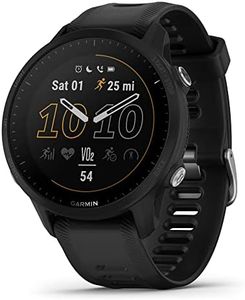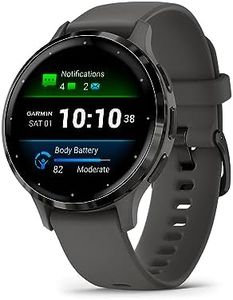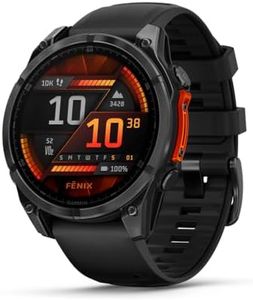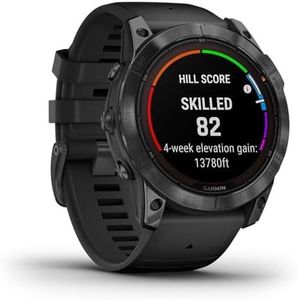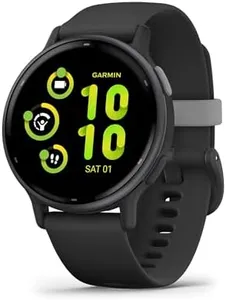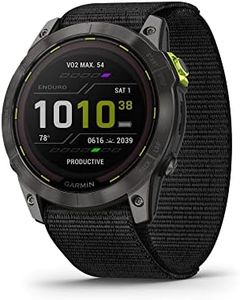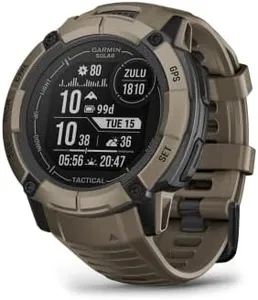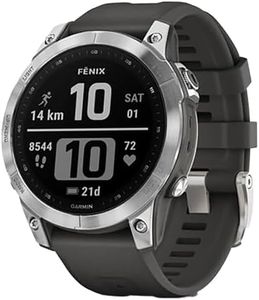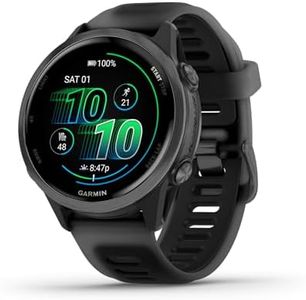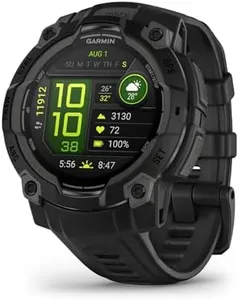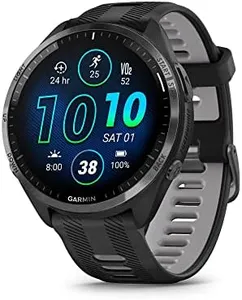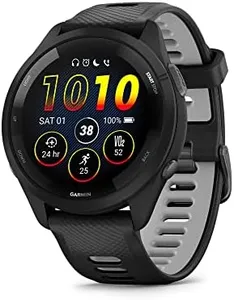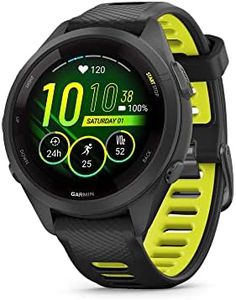We Use CookiesWe use cookies to enhance the security, performance,
functionality and for analytical and promotional activities. By continuing to browse this site you
are agreeing to our privacy policy
10 Best Garmin Man Watches
From leading brands and best sellers available on the web.By clicking on a link to a third party's website, log data is shared with that third party.
Buying Guide for the Best Garmin Man Watches
When you're looking for a Garmin men's watch, it's important to focus on the features that match your lifestyle and activity level. Some Garmin watches are built for rugged outdoor adventures, while others are designed for everyday use or sports tracking. Think about what you'll use the watch for most—fitness, navigation, smart features, or a mix of everything. Always consider what matters most to you: battery life, size, features, or comfort on your wrist.Display TypeDisplay type refers to the kind of screen used on the watch. Garmin watches commonly use either sunlight-visible, transflective memory-in-pixel (MIP) displays or AMOLED screens. MIP displays are better for outdoor visibility and longer battery life, while AMOLED screens are brighter, more colorful, and sharper but may drain the battery faster. If you spend lots of time outdoors or need long battery life, MIP is usually better. If you prefer vivid visuals and plan to use it mostly indoors or for casual wear, AMOLED might be the right choice.
Battery LifeBattery life is how long the watch runs between charges. Some watches last just a few days with all features enabled, while outdoors or adventure models can last weeks on a single charge, especially in battery-saver modes. If you want a watch mainly for daily activities and easy charging is not a problem, shorter battery life can work. Adventurers, travelers, or those doing multi-day events should consider models with extended battery life.
GPS and Navigation FeaturesGPS and navigation features help you track your location and navigate your routes. Basic watches might have simple GPS for tracking runs or rides, while advanced watches offer multi-band GPS, topographic maps, and real-time navigation. If you do simple workouts in urban areas, basic GPS is sufficient. For trail runners, hikers, and explorers who go off the beaten path, advanced navigation is a must.
Activity and Health TrackingThis refers to the watch's ability to monitor things like steps, calories, heart rate, sleep, and more. Almost all Garmin watches do basic tracking, but higher-end ones offer advanced insights such as VO2 max, stress tracking, pulse oximeter, and body battery. If you just want to keep an eye on your general health, basic tracking will do. Athletes, fitness enthusiasts, and those interested in detailed health insights should look for watches with more advanced sensors and analytics.
Durability and Water ResistanceDurability means how tough the watch is, and water resistance describes its ability to survive exposure to water. Some Garmin watches are built for extreme conditions with rugged cases and high water-resistance ratings, while others are designed more for daily wear. If you’re into extreme sports, diving, or outdoor adventures, choose a tougher model. Otherwise, basic models with standard water resistance should be enough for everyday use, including swimming or showering.
Smart FeaturesSmart features cover things like notifications, music storage, contactless payments, and app support. Some Garmin watches work almost like mini-smartphones on your wrist, while others keep things simple with just basic notifications. If you like leaving your phone behind or want easy access to playlists, payments, and messages, pick a watch with enhanced smart features. For those who just want a fitness tracker, basic models may meet your needs.
Size and ComfortSize and comfort relate to the physical fit of the watch on your wrist. Bigger watches might have more features and bigger batteries, but can feel heavy or bulky; smaller, lighter watches are more comfortable for all-day wear but may have less screen space. If you have a smaller wrist or plan to wear the watch all day and night, consider a lighter and slimmer model. If you like a big screen or need ample battery for outdoor trips, you might prefer a larger watch.
